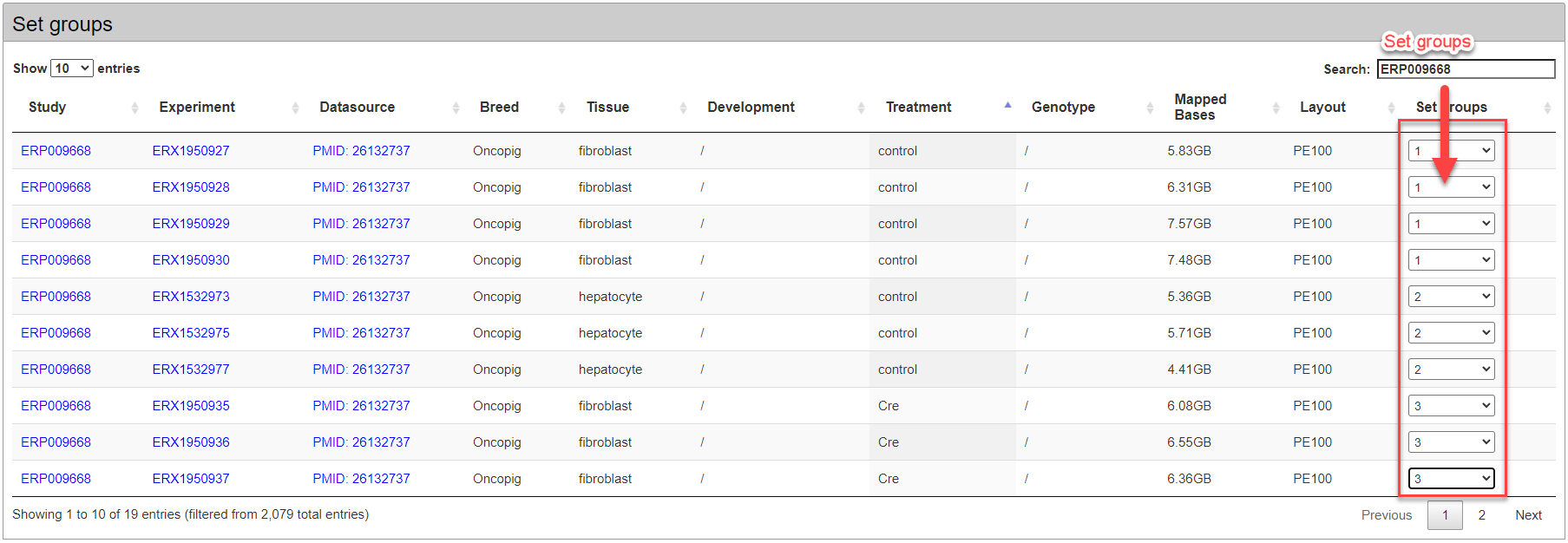6.2 Task setting
6.2.1 Retrieve public samples for re-analysis
Firstly, users can retrieve the public samples of the reference species by RNA-seq layout, read length, volume, publication.
To analyze the expression conservation of ortholog genes cross-species, users should select another species as target species and retrieve the public samples by RNA-seq layout, read length, volume, publication.
6.2.2 Set groups
Users should set at least 4 experimental groups for both reference species and target species. Each group pair must be in identical experimental conditions. For example, same tissue, same treatment and so on.
6.2.3 upload samples for co-analysis
To perform co-analysis with public RNA-seq samples, users can upload their RNA-seq data through the following interface. Refer to the
"co-analysis" page to see how to prepare user's own RNA-seq data.
6.2.4 Set group labels
In addition to the default group labels such as A, B, C, E, ..., users can also customize group label to represent group feature.
6.2.5 set methods and parameters
After setting groups, users can select methods and parameters for differential expression analysis(DESeq2/edgeR) and expression relevance analysis(pearson/kendall/speaman).
6.2.6 job request
The analysis task must be manually confirmed by email to avoid tasks from non-human submission. Users must offer email address to accept confirmation notice or retrieve analysis results.







